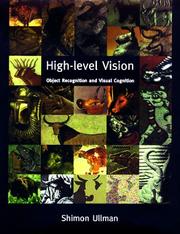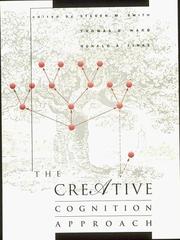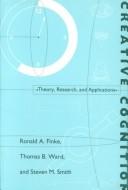| Listing 1 - 10 of 216 | << page >> |
Sort by
|
Book
ISBN: 0429465114 9780429465116 9780429877650 042987765X 9780429877667 0429877668 9780429877643 0429877641 9781138609303 9780367546779 1138609307 0367546779 Year: 2021 Publisher: Taylor & Francis
Abstract | Keywords | Export | Availability | Bookmark
 Loading...
Loading...Choose an application
- Reference Manager
- EndNote
- RefWorks (Direct export to RefWorks)
Social Thinking and History demonstrates that our representations of history are constructed through complex psychosocial processes in interaction with multiple others, and that they evolve throughout our lifetime, playing an important role in our relation to our social environment. Building on the literature on social thinking, collective memory, and sociocultural psychology, this book proposes a new perspective on how we understand and use our collective past. It focuses on how we actively think about history to construct representations of the world within which we live and how we learn to challenge or appropriate the stories we have heard about the past. Through the analysis of three studies of how history is understood and represented in different contexts – in political discourses in France, by intellectuals and artists in Belgium, and when discussing a current event in Poland – its aim is to offer a rich picture of our representations of the past and the role they play in everyday life. This book will be of great interest toacademics, researchers, and postgraduate students in the fields of psychology, memory studies, sociology, political science, and history. It will also make an interesting read for psychologists and human and social scientists working on collective memory.
Memory --- Social aspects. --- Retention (Psychology) --- Intellect --- Psychology --- Thought and thinking --- Comprehension --- Executive functions (Neuropsychology) --- Mnemonics --- Perseveration (Psychology) --- Reproduction (Psychology) --- Social Representation --- Thinking, Reasoning and Problem Solving --- Cross Cultural Psychology --- Social Cognition --- cognition --- collective memory --- Historical reasoning --- history --- psychological processes --- social representation --- social thinking --- sociocultural

ISBN: 0262231956 0262285843 0585078599 9780262285841 9780585078595 9780262231954 Year: 1998 Publisher: Cambridge, Mass. MIT Press
Abstract | Keywords | Export | Availability | Bookmark
 Loading...
Loading...Choose an application
- Reference Manager
- EndNote
- RefWorks (Direct export to RefWorks)
Motion perception is fundamental to survival. Until recently, research on motion perception emphasized such basic aspects of motion as sampling and filtering. In the past decade, however, the emphasis has gradually shifted to higher-level motion processing--i.e., processing that takes place not only in the primary visual cortex but also in the "higher" or more complicated parts of the brain. The contributors to this book focus on such key aspects of motion processing as interaction and integration between locally measured motion units, structure from motion, heading in an optical flow, and second-order motion. They also discuss the interaction of motion processing with other high-level visual functions such as surface representation and attention. The book is divided into three sections: (1) interactive aspects of motion, (2) motion coherence and grouping, and (3) heading and structure from motion. Each section begins with computational aspects, proceeds to the neuropsychological/neurophysiological, and ends with the psychophysical. Contributors : Thomas D. Albright, Don Beinfang, Patrick Cavanagh, Karen R. Dobkins, Stephen Grossberg, Norberto M. Grzywacz, Ellen C. Hildreth, Marjorie LeMay, Zhong-Lin Lu, Satoru Miyauchi, Ken Nakayama, Constance S. Royden, Takao Sato, George Sperling, Keiji Tanaka, James T. Todd, Peter Tse, William R. Uttal, Lucia M. Vaina, William H. Warren, Jr., Takeo Watanabe, Edward Wolpow, Alan L. Yuile.
Motion perception (Vision) --- Motion Perception --- Visual Perception --- Perception --- Mental Processes --- Psychological Phenomena and Processes --- Psychiatry and Psychology --- Physiological aspects. --- physiology. --- #PBIB:1999.4 --- Psychologic Processes and Principles --- Human Information Processing --- Information Processing, Human --- Perceptions --- Perception, Visual --- Perceptions, Visual --- Visual Perceptions --- Perception, Motion --- Movement perception (Vision) --- Speed perception --- Psychologic Processes --- Psychological Processes --- Phenomena, Psychological --- Processes, Psychologic --- Processes, Psychological --- Psychological Phenomenas --- Psychological Processe --- Sensation --- Vision, Ocular --- Movement, Psychology of --- Vision --- Visual perception --- Physiological aspects

ISBN: 0262210134 0262710072 0262285355 0585360278 9780262285353 9780262710077 9780262210133 9780585360270 0262220512 9780262220514 Year: 1996 Publisher: Cambridge, Mass. MIT Press
Abstract | Keywords | Export | Availability | Bookmark
 Loading...
Loading...Choose an application
- Reference Manager
- EndNote
- RefWorks (Direct export to RefWorks)
In this book, Shimon Ullman focuses on the processes of high-level vision that deal with the interpretation and use of what is seen in the image. In particular, he examines two major problems. The first, object recognition and classification, involves recognizing objects despite large variations in appearance caused by changes in viewing position, illumination, occlusion, and object shape. The second, visual cognition, involves the extraction of shape properties and spatial relations in the course of performing visual tasks such as object manipulation, planning movements in the environment, or interpreting graphical material such as diagrams, graphs and maps.The book first takes up object recognition and develops a novel approach to the recognition of three-dimensional objects. It then studies a number of related issues in high-level vision, including object classification, scene segmentation, and visual cognition. Using computational considerations discussed throughout the book, along with psychophysical and biological data, the final chapter proposes a model for the general flow of information in the visual cortex.Understanding vision is a key problem in the brain sciences, human cognition, and artificial intelligence. Because of the interdisciplinary nature of the theories developed in this work, High-Level Vision will be of interest to readers in all three of these fields.
Cognitive psychology --- Affective and dynamic functions --- Visual perception --- Visual Perception --- Perception --- Mental Processes --- Psychological Phenomena and Processes --- Psychiatry and Psychology --- Neuroscience --- Human Anatomy & Physiology --- Health & Biological Sciences --- Psychologic Processes --- Psychologic Processes and Principles --- Psychological Processes --- Phenomena, Psychological --- Processes, Psychologic --- Processes, Psychological --- Psychological Phenomenas --- Psychological Processe --- Human Information Processing --- Information Processing, Human --- Perceptions --- Sensation --- Perception, Visual --- Perceptions, Visual --- Visual Perceptions --- Vision, Ocular --- Optics, Psychological --- Vision --- Visual discrimination --- Psychological aspects --- Visual perception. --- #TELE:MI2
Book
ISBN: 1282402862 9786612402869 0199745439 9780199745432 0195394267 9780195394269 9781282402867 6612402865 Year: 2010 Publisher: Oxford New York Oxford University Press
Abstract | Keywords | Export | Availability | Bookmark
 Loading...
Loading...Choose an application
- Reference Manager
- EndNote
- RefWorks (Direct export to RefWorks)
Sight can be so effortless, so useful, and so entertaining--the average human can distinguish several million colors; a falcon can see a fencepost from three thousand yards--that we never stop to think about how complex a process it is and how easily it can fail us. We never have as clear and complete a picture of the world around us as we think we do. The gaps between what our eyes take in and what is in our mind's eye provide the unifying theme in Bruno Breitmeyer's wide-ranging volume. In his fascinating account of the many ways that our eyes, and minds, both see and fail to see, Breitmeyer
Cognition. --- Visual perception. --- Visual perception --- Visual Perception --- Cognition --- Perception --- Mental Processes --- Psychological Phenomena and Processes --- Psychiatry and Psychology --- Psychology --- Social Sciences --- Psychologic Processes --- Psychologic Processes and Principles --- Psychological Processes --- Phenomena, Psychological --- Processes, Psychologic --- Processes, Psychological --- Psychological Phenomenas --- Psychological Processe --- Human Information Processing --- Information Processing, Human --- Sensory Processing --- Processing, Sensory --- Sensation --- Cognitive Function --- Cognitions --- Cognitive Functions --- Function, Cognitive --- Functions, Cognitive --- Visual Processing --- Perception, Visual --- Processing, Visual --- Vision, Ocular --- Optics, Psychological --- Vision --- Visual discrimination --- Psychological aspects
Book
ISBN: 0275997243 0275997227 9780275997267 9780275997229 9780275997281 0275997286 027599726X 9780275997243 Year: 2008 Publisher: Westport: Praeger,
Abstract | Keywords | Export | Availability | Bookmark
 Loading...
Loading...Choose an application
- Reference Manager
- EndNote
- RefWorks (Direct export to RefWorks)
Miracles. --- Medicine --- Religion and science --- Parapsychology --- religious events --- spiritual events --- the Bible --- psychological processes --- biblical miracle stories --- psychoanalysis --- the Old Testament --- Moses --- religious history --- Christ --- religious discourse --- the Gospels --- healing --- faith traditions --- science --- God and science --- miracle attributions --- neuropsychology --- prayer --- medical healing --- psychoneuroimmunology --- psychodynamics --- Jesus's healing miracles --- crowd psychology --- African culture --- stigmata --- Kongo religious history --- mysterious healings intercessory prayer --- group psychology --- Jesus --- extremism --- mysticism --- the paranormal --- mental illness --- faith healers --- psychotherapy --- music --- prophecy

ISBN: 0262112493 0262276917 058549021X 9780262276917 9780262112499 9780585490212 Year: 2000 Publisher: Cambridge, Mass. MIT Press
Abstract | Keywords | Export | Availability | Bookmark
 Loading...
Loading...Choose an application
- Reference Manager
- EndNote
- RefWorks (Direct export to RefWorks)
These essays draw on work in the history and philosophy of science, the philosophy of mind and language, the development of concepts in children, conceptual change in adults, and reasoning in human and artificial systems.Explanations seem to be a large and natural part of our cognitive lives. As Frank Keil and Robert Wilson write, "When a cognitive activity is so ubiquitous that it is expressed both in a preschooler's idle questions and in work that is the culmination of decades of scholarly effort, one has to ask whether we really have one and the same phenomenon or merely different cognitively based phenomena that are loosely, or even metaphorically, related."This book is unusual in its interdisciplinary approach to that ubiquitous activity. The essays address five basic questions about explanation: How do explanatory capacities develop? Are there kinds of explanation? Do explanations correspond to domains of knowledge? Why do we seek explanations, and what do they accomplish? How central are causes to explanation? The essays draw on work in the history and philosophy of science, the philosophy of mind and language, the development of concepts in children, conceptual change in adults, and reasoning in human and artificial systems. They also introduce emerging perspectives on explanation from computer science, linguistics, and anthropology.ContributorsWoo-kyoung Ahn, William F. Brewer, Patricia W. Cheng, Clark A. Chinn, Andy Clark, Robert Cummins, Clark Glymour, Alison Gopnik, Christine Johnson, Charles W. Kalish, Frank C. Keil, Robert N. McCauley, Gregory L. Murphy, Ala Samarapungavan, Herbert A. Simon, Paul Thagard, Robert A. Wilson
Cognition --- Explanation --- Cognition. --- Explanation. --- Concept Formation. --- Cognitie. --- Verklaring. --- Concept Formation --- Thinking --- Mental Processes --- Psychological Phenomena and Processes --- Psychiatry and Psychology --- Psychology --- Social Sciences --- Psychologic Processes and Principles --- Human Information Processing --- Information Processing, Human --- Critical Thinking --- Thinking Skills --- Thinking Skill --- Thinking, Critical --- Cognitive Function --- Cognitions --- Cognitive Functions --- Function, Cognitive --- Functions, Cognitive --- Concept Formations --- Formation, Concept --- Formations, Concept --- Explanation (Philosophy) --- Psychologic Processes --- Psychological Processes --- Phenomena, Psychological --- Processes, Psychologic --- Processes, Psychological --- Psychological Phenomenas --- Psychological Processe --- Thought --- Thoughts --- Knowledge, Theory of --- COGNITIVE SCIENCES/General --- COGNITIVE SCIENCES/Psychology/Cognitive Psychology --- Épistémologie --- Explication.

ISBN: 026219354X 0262512831 0262283891 0585003491 9780262283892 9780585003498 9780262193542 Year: 1995 Publisher: Cambridge, Mass. MIT Press
Abstract | Keywords | Export | Availability | Bookmark
 Loading...
Loading...Choose an application
- Reference Manager
- EndNote
- RefWorks (Direct export to RefWorks)
Annotation
Cognition. --- Creative ability. --- Creative thinking. --- Creative ability --- Creative thinking --- Cognition --- Psychology --- Creative thinking (Education) --- Thought and thinking --- Creativeness --- Creativity --- Ability --- Creation (Literary, artistic, etc.) --- Problem Solving --- Mental Processes --- Learning --- Thinking --- Psychological Phenomena and Processes --- Psychiatry and Psychology --- Social Sciences --- Psychologic Processes and Principles --- Critical Thinking --- Thinking Skills --- Thinking Skill --- Thinking, Critical --- Memory Training --- Phenomenography --- Training, Memory --- Human Information Processing --- Information Processing, Human --- Cognitive Function --- Cognitions --- Cognitive Functions --- Function, Cognitive --- Functions, Cognitive --- Psychologic Processes --- Psychological Processes --- Phenomena, Psychological --- Processes, Psychologic --- Processes, Psychological --- Psychological Phenomenas --- Psychological Processe --- Thought --- Thoughts --- Memory Consolidation --- Education --- Executive Function

ISBN: 0262661160 0262161982 0262281740 0585442789 0262293080 9780585442785 9780262281744 9780262161985 9780262661164 9780262293082 Year: 2002 Publisher: Cambridge, Mass. : MIT Press,
Abstract | Keywords | Export | Availability | Bookmark
 Loading...
Loading...Choose an application
- Reference Manager
- EndNote
- RefWorks (Direct export to RefWorks)
Annotation
Cognition. --- Cognitive science. --- Cognition --- Cognitive science --- Cognitive Science --- Mental Processes --- Psychology --- Psychological Phenomena and Processes --- Behavioral Sciences --- Behavioral Disciplines and Activities --- Psychiatry and Psychology --- Social Sciences --- Proxemics --- Behavioral Science --- Proxemic --- Science, Behavioral --- Sciences, Behavioral --- Psychologic Processes and Principles --- Factors, Psychological --- Psychological Factors --- Psychological Side Effects --- Psychologists --- Psychosocial Factors --- Side Effects, Psychological --- Factor, Psychological --- Factor, Psychosocial --- Factors, Psychosocial --- Psychological Factor --- Psychological Side Effect --- Psychologist --- Psychosocial Factor --- Side Effect, Psychological --- Human Information Processing --- Information Processing, Human --- Cognitive Sciences --- Science, Cognitive --- Sciences, Cognitive --- Cognitive Function --- Cognitions --- Cognitive Functions --- Function, Cognitive --- Functions, Cognitive --- Psychologic Processes --- Psychological Processes --- Phenomena, Psychological --- Processes, Psychologic --- Processes, Psychological --- Psychological Phenomenas --- Psychological Processe --- Science --- Philosophy of mind

ISBN: 0262112590 0262276895 142372755X 0262263327 9780262276894 9780262112598 9780262263320 9781423727552 Year: 2001 Publisher: Cambridge, Mass. : MIT Press,
Abstract | Keywords | Export | Availability | Bookmark
 Loading...
Loading...Choose an application
- Reference Manager
- EndNote
- RefWorks (Direct export to RefWorks)
Keijzer provides a reconstruction of cognitive science's implicit representational explanation of behavior, which he calls Agent Theory (AT), the use of mind as a subpersonal mechanism of behavior.Representation is a fundamental concept within cognitive science. Most often, representations are interpreted as mental representations, theoretical entities that are the bearers of meaning and the source of intentionality. This approach views representation as the internal reflection of external circumstances--that is, as the end station of sensory processes that translate the environmental state of affairs into a set of mental representations.Fred Keijzer stresses, however, that representations are also the starting point for a set of processes that lead back to the external environment. They are used as theoretical components within an explanation of a person's outwardly visible behavior. In this book Keijzer investigates the usefulness of representation for behavioral explanation, irrespective of mental issues. Viewing representation solely in terms of its contribution to explaining behavior allows him to build a serious case for a nonrepresentational approach and to evaluate representation's role in cognitive science.Keijzer provides a reconstruction of cognitive science's implicit representational explanation of behavior, which he calls Agent Theory (AT). AT is the use of mind as a subpersonal mechanism of behavior. He proposes an alternative to AT called Behavioral Systems Theory (BST), which explains behavior as the result of interactions between an organism and its environment. Keijzer compares BST to related work in the biology of cognition, in the building of animal-like robots, and in dynamical systems theory. Most important, he extends BST to the difficult issue of anticipatory behavior through an analogy between behavior and morphogenesis, the process by which a multicellular body develops.
Cognitive science. --- Human behavior. --- Mental representation. --- Cognitive science --- Human behavior --- Mental representation --- Psychological Phenomena and Processes --- Behavior and Behavior Mechanisms --- Psychiatry and Psychology --- Behavior --- Mental Processes --- Social Sciences --- Psychology --- Human Information Processing --- Information Processing, Human --- Acceptance Process --- Acceptance Processes --- Behaviors --- Process, Acceptance --- Processes, Acceptance --- Psychologic Processes and Principles --- Representation, Mental --- Action, Human --- Behavior, Human --- Ethology --- Human action --- Human beings --- Psychologic Processes --- Psychological Processes --- Phenomena, Psychological --- Processes, Psychologic --- Processes, Psychological --- Psychological Phenomenas --- Psychological Processe --- Abstraction --- Perception --- Human biology --- Physical anthropology --- Social sciences --- Psychology, Comparative --- Science --- Philosophy of mind --- COGNITIVE SCIENCES/General --- Sciences cognitives. --- Comportement humain. --- Représentation mentale

ISBN: 0262061503 0262560968 0262272652 0585031045 9780262560962 9780262061506 9780262272650 9780585031040 Year: 1996 Publisher: Cambridge, Mass. MIT Press
Abstract | Keywords | Export | Availability | Bookmark
 Loading...
Loading...Choose an application
- Reference Manager
- EndNote
- RefWorks (Direct export to RefWorks)
Creative Cognition combines original experiments with existing work in cognitive psychology to provide the first explicit account of the cognitive processes and structures that contribute to creative thinking and discovery.Creative Cognition combines original experiments with existing work in cognitive psychology to provide the first explicit account of the cognitive processes and structures that contribute to creative thinking and discovery.In separate chapters, the authors take up visualization, concept formation, categorization, memory retrieval, and problem solving. They describe novel experimental methods for studying creative cognitive processes under controlled laboratory conditions, along with techniques that can be used to generate many different types of inventions and concepts. Unlike traditional approaches, Creative Cognition considers creativity as a product of numerous cognitive processes, each of which helps to set the stage for insight and discovery. It identifies many of these processes as well as general principles of creative cognition that can be applied across a variety of different domains, with examples in artificial intelligence, engineering design, product development, architecture, education, and the visual arts.Following a summary of previous approaches to creativity, the authors present a theoretical model of the creative process. They review research involving an innovative imagery recombination technique, developed by Finke, that clearly demonstrates that creative inventions can be induced in the laboratory. They then describe experiments in category learning that support the provocative claim that the factors constraining category formation similarly constrain imagination and illustrate the role of various memory processes and other strategies in creative problem solving.
Creative thinking --- Cognition --- Imagery (Psychology) --- Visualization --- Mental Processes --- Perception --- Psychological Phenomena and Processes --- Psychiatry and Psychology --- Visual Perception --- Social Sciences --- Psychology --- Cognitive Function --- Cognitions --- Cognitive Functions --- Function, Cognitive --- Functions, Cognitive --- Perception, Visual --- Perceptions, Visual --- Visual Perceptions --- Psychologic Processes and Principles --- Perceptions --- Visualisation --- Imagery, Mental --- Images, Mental --- Mental imagery --- Mental images --- Creative thinking (Education) --- Human Information Processing --- Information Processing, Human --- Pensée créatrice --- Imagerie (Psychologie) --- Vision, Ocular --- Psychologic Processes --- Psychological Processes --- Phenomena, Psychological --- Processes, Psychologic --- Processes, Psychological --- Psychological Phenomenas --- Psychological Processe --- Sensation --- Imagination --- Visual perception --- Creative ability --- Thought and thinking --- Cognitive psychology --- Affective and dynamic functions --- Semiotics --- Cognition. --- Creative thinking. --- Imagery (Psychology). --- Visualization. --- Pensée créatrice --- COGNITIVE SCIENCES/General --- COGNITIVE SCIENCES/Psychology/Cognitive Psychology
| Listing 1 - 10 of 216 | << page >> |
Sort by
|

 Search
Search Feedback
Feedback About UniCat
About UniCat  Help
Help News
News